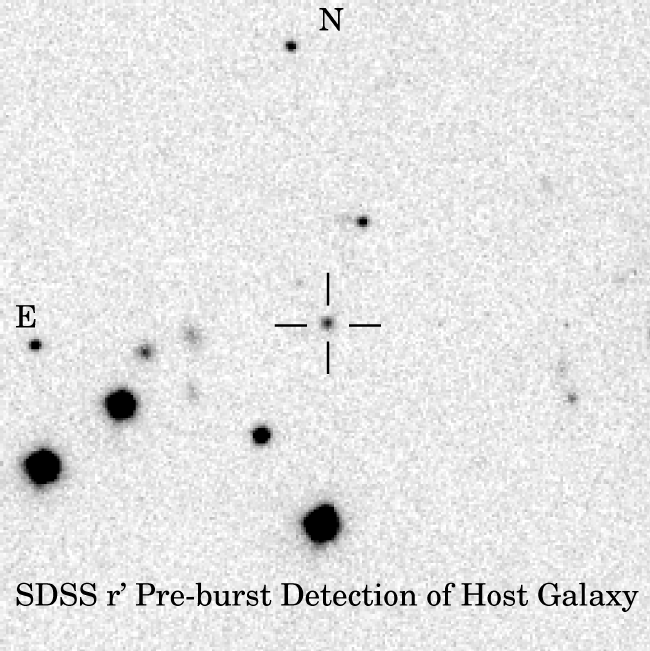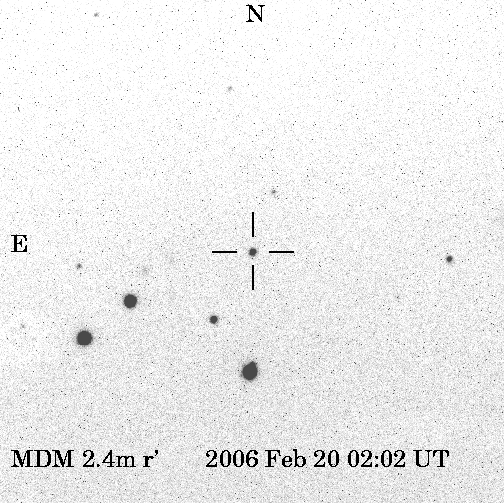 | |
GRB 060218: Optical follow-up
| GCN Circular #4783
GRB 060218: Pre-burst detection of a possible host galaxy |
N. Mirabal (U. Michigan) reports: "Analysis of the SDSS pre-burst observations of the GRB 060218 field (Cool et al. GCN #4777) reveals an extended object at 03h21m39.68s +16o52'01.66" (J2000). Given the proximity of this object to the reported XRT and UVOT positions for a candidate afterglow (Cusumano et al. GCN #4775, Marshall et al. GCN #4779), this should be considered a potential host galaxy of a low-redshift GRB. Further multiwavelength observations are encouraged to confirm the reality of this trigger (Barbier et al. GCN #4780), and its possible association with this nearby galaxy. I acknowledge useful conversations with Richard Cool." |
| GCN Circular #4784
GRB 060218: MDM Observations |
N. Mirabal (U. Michigan) reports on behalf of the MDM Observatory GRB follow-up team: "I observed the candidate optical afterglow of Swift GRB 060218 detected by the Swift UVOT (Cusumano et al. GCN #4775, Marshall et al. GCN #4779, Quimby et al. GCN #4782) with the MDM 2.4m telescope and RETROCAM imager under partly cloudy conditions. Calibration with SDSS pre-burst observations (Cool et al. GCN #4777) yields r = 17.55 +/- 0.1 on Feb. 19.1438 UT for the OT. This is brighter than the pre-burst observations and confirms it as the OT of GRB 060218." |

|

| |

| ||
| (J2000) 03h 21m 39.7s, +16° 52′ 02″ |
| GCN Circular #4792
GRB 060218: MDM Redshift |
N. Mirabal (U. Michigan) and J. P. Halpern (Columbia U.) report on behalf of the MDM Observatory GRB follow-up team: "We obtained a low-resolution spectrum of the optical afterglow and host galaxy of GRB 060218 using the MDM 2.4m telescope and Boller & Chivens (CCDS) Spectrograph on Feb. 20 02:20 UT. Strong, narrow emission lines of H-beta, [O III] 4959,5007, and H-alpha at z=0.0331 are seen, superposed on a blue continuum, which is still much brighter than the SDSS pre-burst magnitudes. The line ratios are typical of a high-excitation starburst. This confirms the low-redshift, extragalactic nature of this unusual GRB. This message may be cited." |

|
|
Nestor Mirabal mirabal@umich.edu |
Jules Halpern jules@astro.columbia.edu |
| Back to the main MDM GRB page | |
| Last Modified: February 25, 2006 | jules@astro.columbia.edu |
